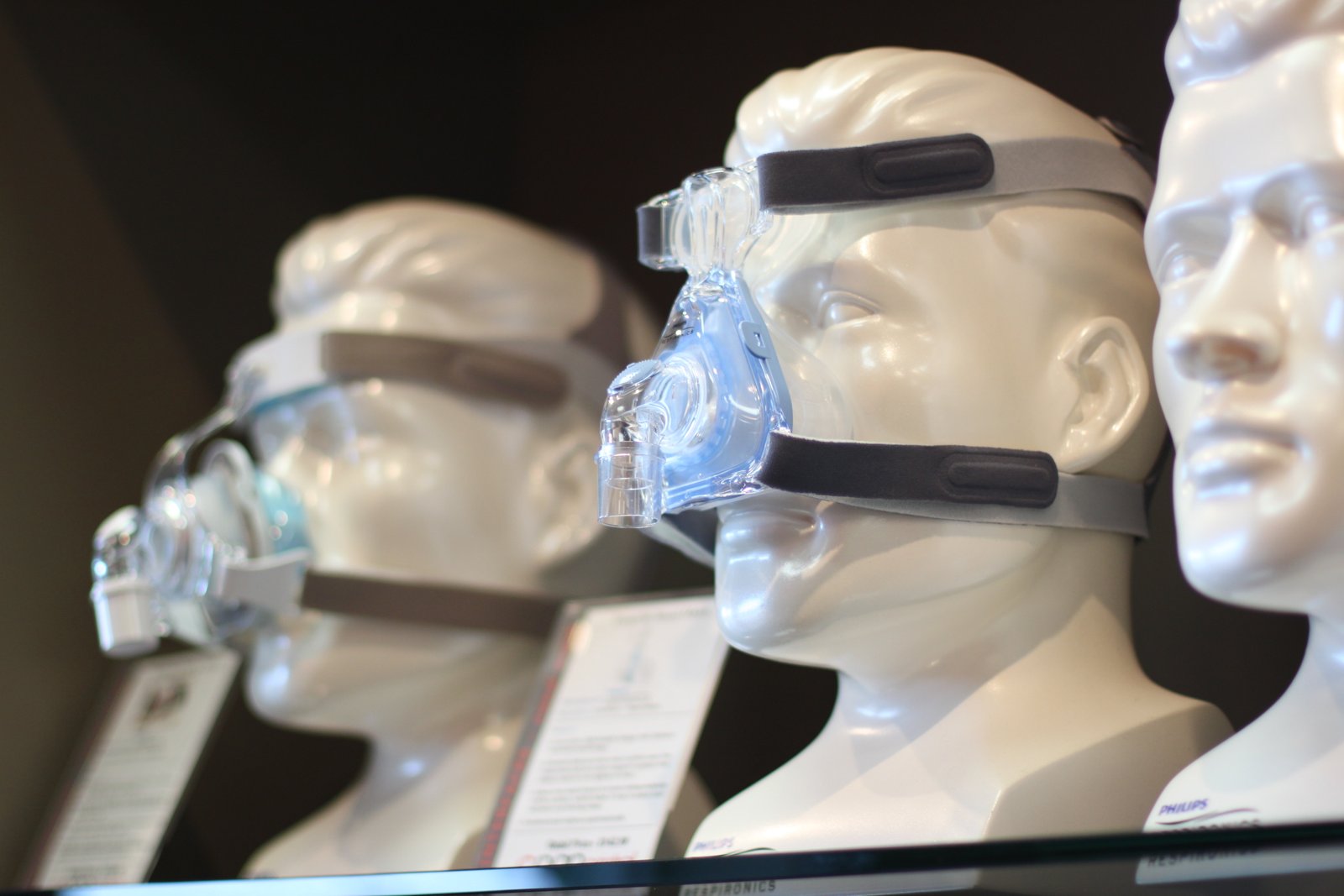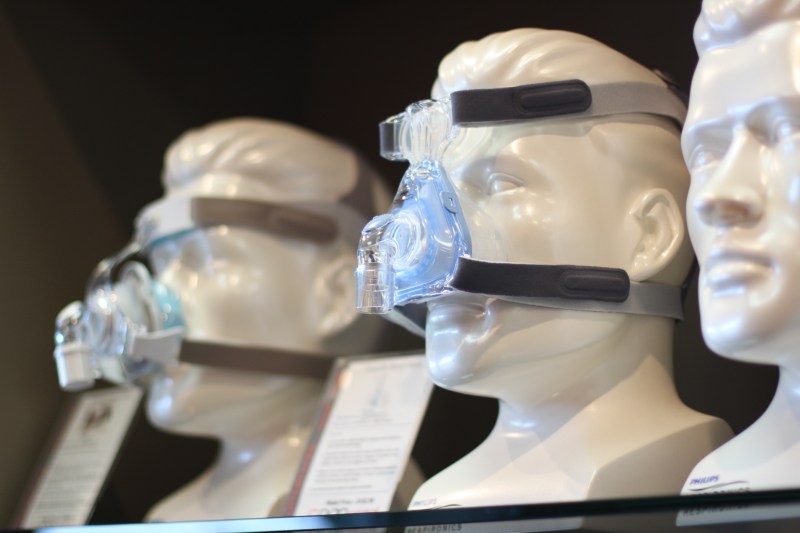
By and large, the human body is designed to breathe from birth, and keep breathing continuously until death. Indeed, if breathing stops, lifespan trends relatively rapidly towards zero. There’s a whole chunk of the brain and nervous system dedicated towards ensuring oxygen keeps flowing in and carbon dioxide keeps flowing out.
Unfortunately, the best laid plans of our body often go awry. Obstructive sleep apnea is a condition in which a person’s airways become blocked by the movement of soft tissues in the throat, preventing the individual from breathing. It’s a mechanical problem that also has a mechanical solution—the CPAP machine.
Under Pressure
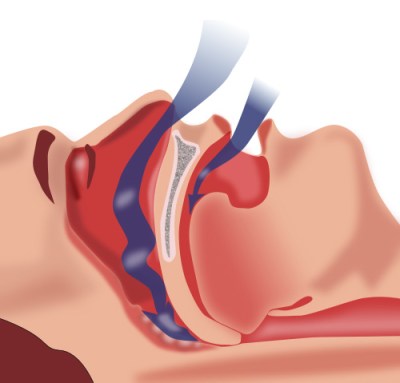
The underlying mechanism of obstructive sleep apnea (OSA) is quite straightforward. During sleep, as the throat, neck, and skeletal muscles all relax, the tongue and/or soft palette can come to block the airway. When this happens, fresh air cannot pass to the lungs, nor can the individual exhale. Breathing is effectively halted, sometimes for minutes at a time. As the individual’s oxygen saturation drops and carbon dioxide levels build up, the brain and nervous system typically trigger an arousal in which the person enters a lighter stage of sleep or wakes up to some degree. The arousal may simply involve a change of position to restore normal breathing, or the individual may wake more fully while gasping for air. Having cleared the airway and resumed normal respiration, the individual generally returns to deeper sleep. As they do, and the muscles relax again, a further obstructive apnea may occur with similar results.
For those suffering from sleep apnea, these arousals can occur many hundreds of times a night. Each disrupts the normal cycles of sleep, generally leading to symptoms of serious sleep deprivation. These arousals often occur without the individual having any awareness they occurred. Sleep apnea can thus easily go undiagnosed, as individuals do not know the cause of their fatigue. In many cases, reports of heavy snoring from sleeping partners are what leads to a sleep apnea diagnosis, as breathing typically becomes louder as the airway slowly closes due to the muscles relaxing during sleep.
Ultimately, the solution to sleep apnea is to stop the airway becoming blocked in the first place, allowing normal breathing to continue all the way through sleep. The problem is that it’s difficult to access the tissues deep in the airway. One might imagine placing some kind of mechanical device into the throat to keep the airway open, but this would be highly invasive. It would also likely pose a choking risk if disrupted during sleep.
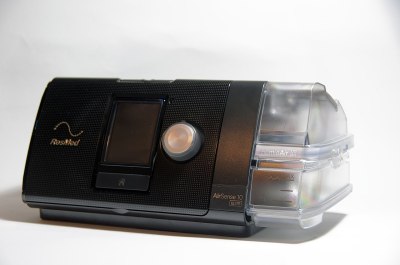
Enter the CPAP machine—short for “continuous positive airway pressure.” Invented by Australian doctor Colin Sullivan in 1980, the idea behind it is simple—pressurize the individual’s airway in order to hold it open and prevent the tongue and soft tissues from causing a blockage. Air pressures used are relatively low. Machines typically deliver in the range of 4 to 20 cm H2O, which has been found sufficient to keep an airway open during sleep. The CPAP machine doesn’t breathe for the user—it just provides air to the airway at greater than atmospheric pressure.
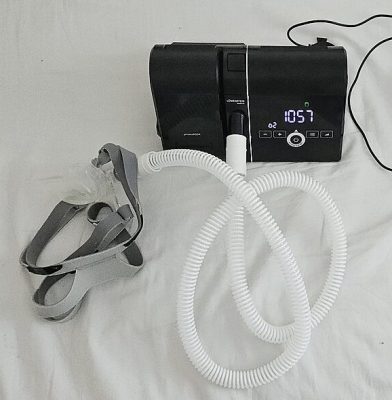
Key to the use of CPAP is how to get the pressurized air inside the airway. Early machines pressurized a large helmet, with an air seal around the neck. Today, modern CPAP machines deliver carefully-controlled pressurized air via a mask. Nasal masks are the least-invasive option, which pressurize the whole airway via the nostrils alone. These masks require that the mouth remain closed during sleep, else the pressurized air is free to leave the airway. Full-face masks, which are similar to those used for other medical procedures, can be used for individuals who need to breathe through their mouth while sleeping.
Overall, a CPAP machine is relatively simple to understand. It consists of a pump to provide pressurized air to the mask, and a user interface for configuring the pressure and other settings. CPAP machines often also feature humidification to stop the supplied air from drying out the user’s mouth and/or nose. This can be paired with heated tubing to warm the air, which avoids condensation from forming in the tube or mask during use. This is called “rainout” and can be unpleasant for the user. Modern machines can also carefully monitor pressure levels and airflow, logging breathing events and other data for later analysis.
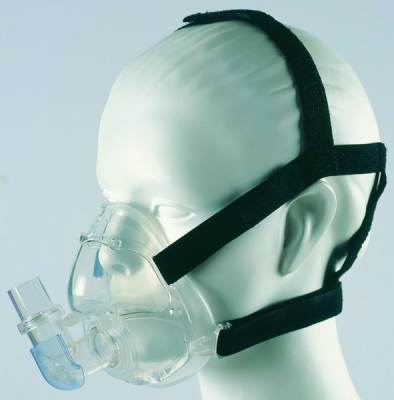
CPAP treatment is not without its issues, however. Users must grow accustomed to wearing a mask while sleeping, as well as adjust to the feeling of breathing in and exhaling out against the continuous incoming pressure from the machine. It’s also important for users to get a suitable mask fit, to avoid issues like skin redness or pressure leaking from the mask. In the latter case, a CPAP machine will be ineffective at keeping an airway open if pressure is lost via leaks. These problems lead to relatively low compliance with CPAP use among those with obstructive sleep apnea. Studies suggest 8% to 15% abandon CPAP use after a single night, while 50% stop using CPAP within their first year. Regardless, the benefits of CPAP machines are well-supported by the available scientific literature. Studies have shown that use of CPAP treatment can reduce sleepiness, blood pressure, and the prevalence of motor vehicle crashes in those with obstructive sleep apnea.
Nobody likes the idea of being semi-woken tens or hundreds of times a night, but for sleep apnea sufferers, that’s precisely what can happen. The CPAP machine is the mechanical solution that provides a good night’s rest, all thanks to a little pressurized air.
Featured image: “wide variety of masks at cpap centra” by [Rachel Tayse]. (Gotta love that title!)
This articles is written by : Nermeen Nabil Khear Abdelmalak
All rights reserved to : USAGOLDMIES . www.usagoldmines.com
You can Enjoy surfing our website categories and read more content in many fields you may like .
Why USAGoldMines ?
USAGoldMines is a comprehensive website offering the latest in financial, crypto, and technical news. With specialized sections for each category, it provides readers with up-to-date market insights, investment trends, and technological advancements, making it a valuable resource for investors and enthusiasts in the fast-paced financial world.
